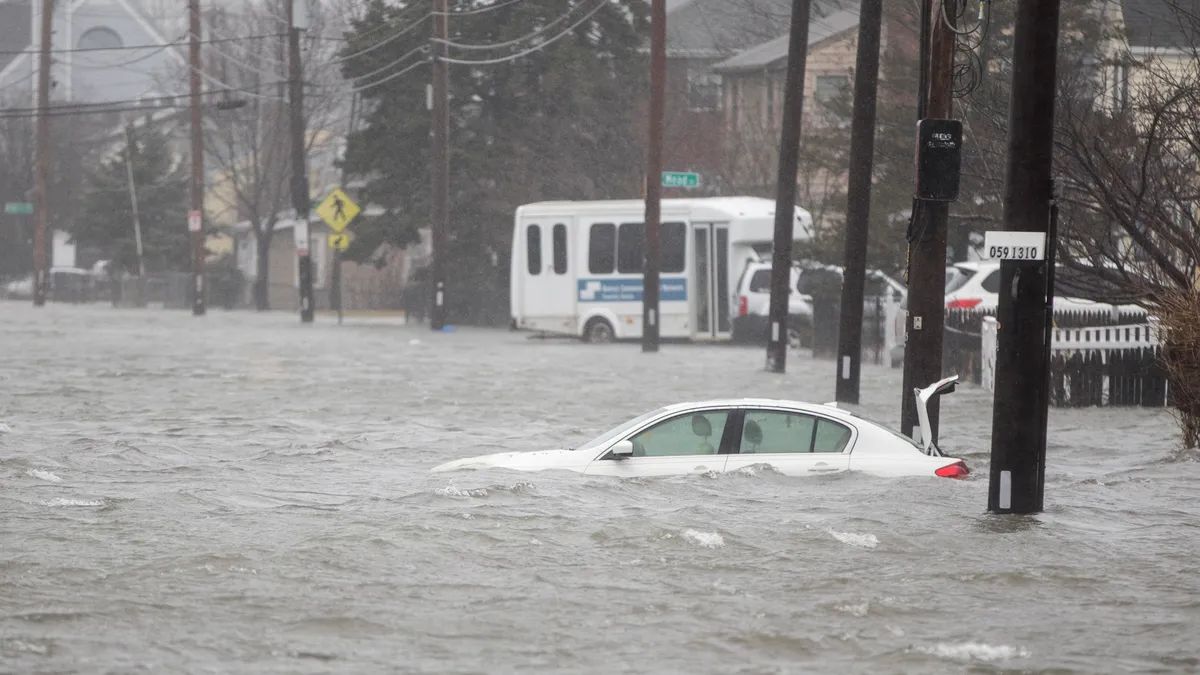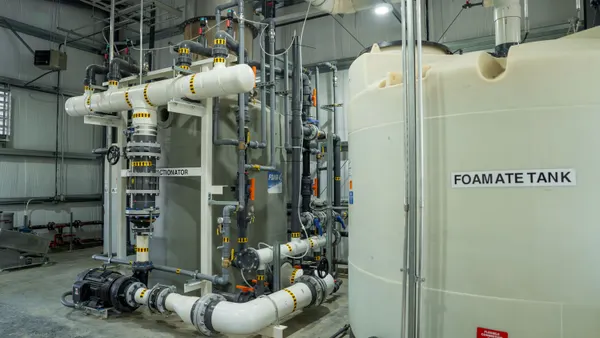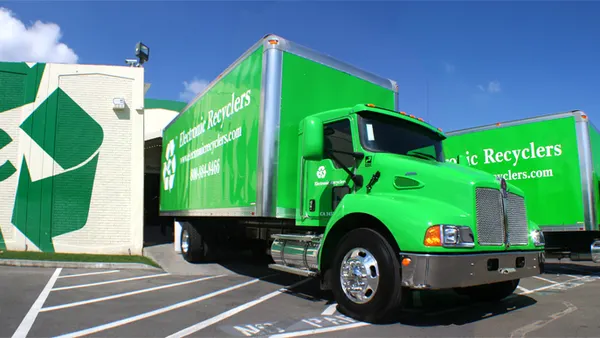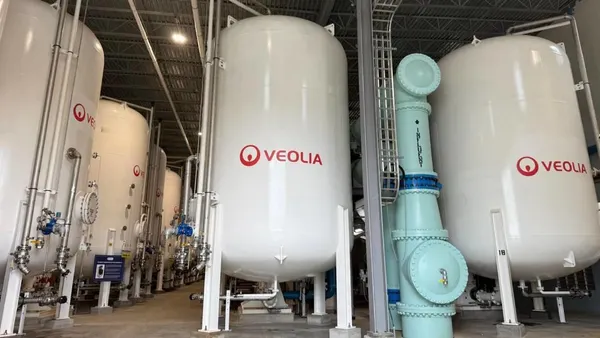A new data visualization from the U.S. EPA shows the projected sea level rise around hazardous waste facilities in flood zones. It’s a tool meant to help facility managers assess possible flood risk and better prepare for climate change impacts.
Coastal landfills, hazardous waste facilities and wastewater facilities will likely face more more frequent and more severe flooding events in coming years, the EPA said in a news release. More than 40% of Americans live near the coast, “making it increasingly important for communities and facility personnel to plan for this eventuality,” the agency said.
The EPA recommends hazardous waste facilities with significant flood risks to update engineering controls and barriers designed more specifically for flooding in mind. That could mean choosing landfill or remediation caps designed for flooding or erosion control, installing new retaining walls, or moving necessary containment and monitoring systems to locations that are less likely to be impacted by a flood, it said.
In 2019, about 1.6 million tons of hazardous waste were managed at 55 facilities that could be affected by five or more feet of sea level rise in coming years, according to EPA hazardous waste data.
Some major waste companies have begun acknowledging flooding as a climate risk noted in their ESG reports. Last year, Republic Services released a Task Force on Climate-related Financial Disclosures, or TCFD, report. It mentioned leachate management and stormwater costs among the projected impacts, though the report names impacts from precipitation-related flooding and does not specifically mention sea level rise.
Waste Connections’ 2022 ESG report included a TCFD framework that mentioned rising sea levels as a safety and environmental issue. It noted that the company’s main mitigation strategy was to install appropriate storm controls and ensure that landfills can withstand 100-year flood events. For future permitting and facility design plans, the report recommends the company “limit exposure to locations likely to be impacted by changes in sea level.”
WM’s most recent TCFD report acknowledged the company has already responded to several climate-related disasters, including floods, in recent years, and “impacts from climate change are reaching a broader swath of our business in North America.”
Though climate hazards can cause business interruptions and create safety issues for workers, the EPA also sees increased flood risk as an environmental justice issue that could put people at higher risk of being exposed to harmful chemicals or pathogens.
Communities with residents that are mainly people of color, indigenous, or have lower income are more likely to live near hazardous waste facilities and face disproportionate impacts of possible contamination, the EPA said. “The climate crisis intersects with and exacerbates significant environmental challenges that disproportionately affect overburdened, under-resourced communities,” said EPA Administrator Michael Regan in a statement.











